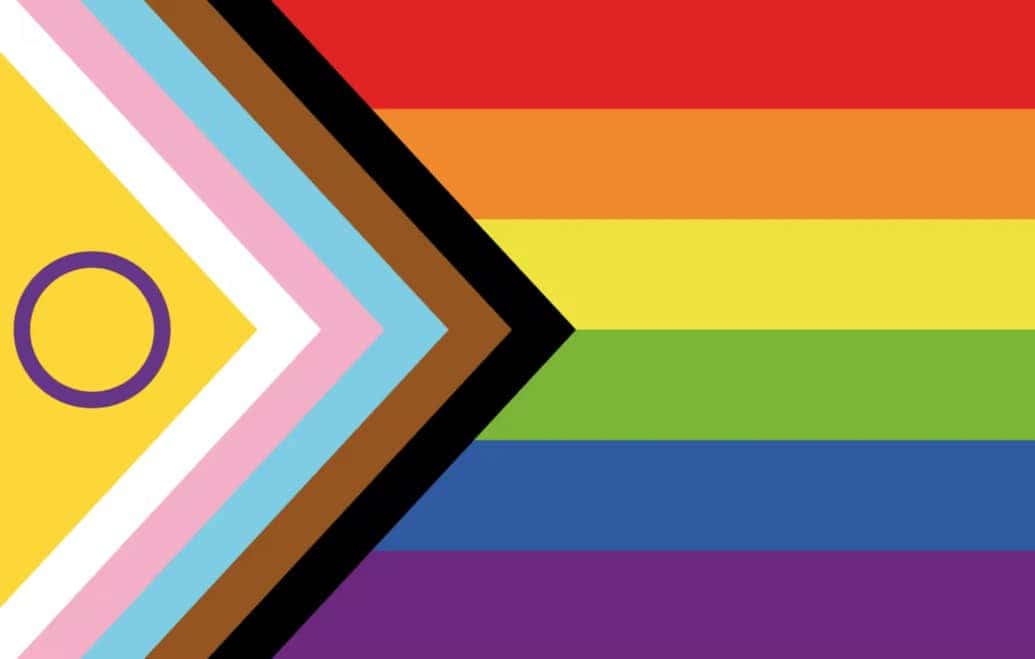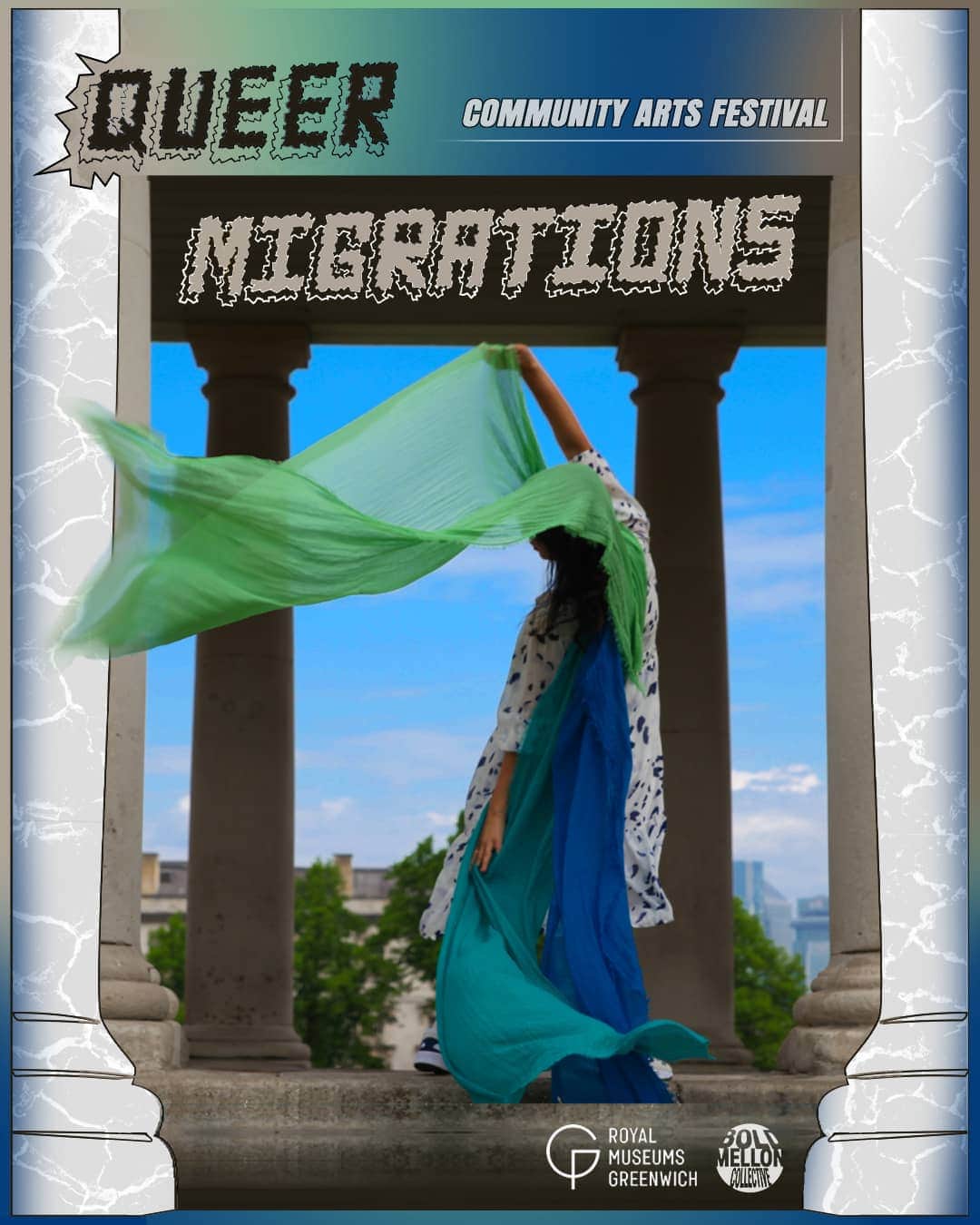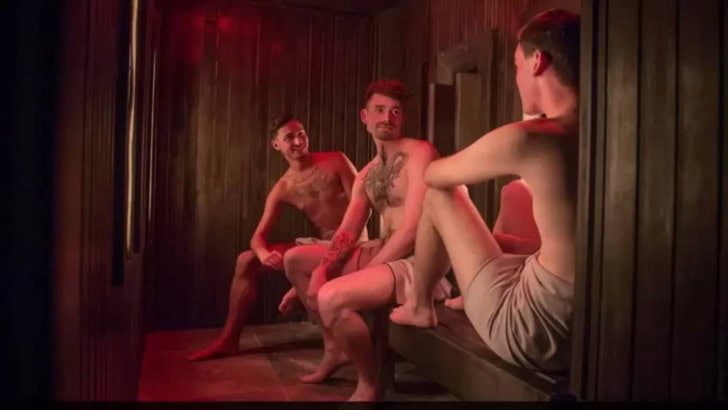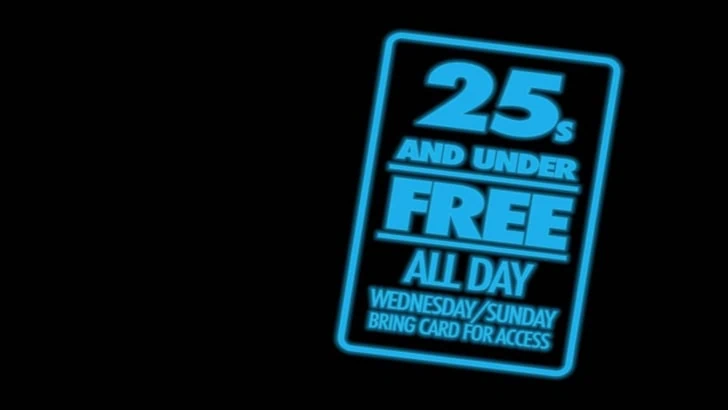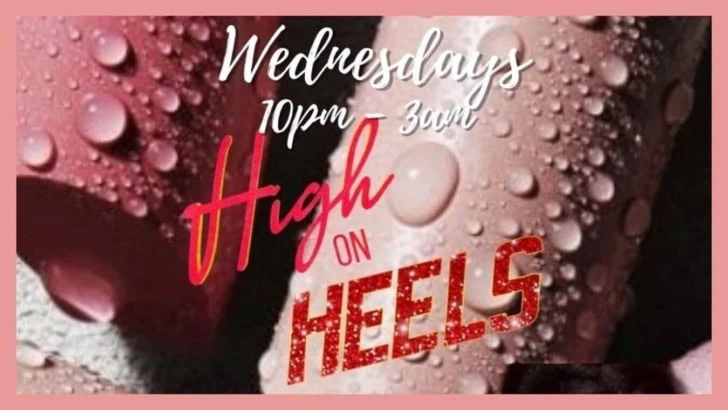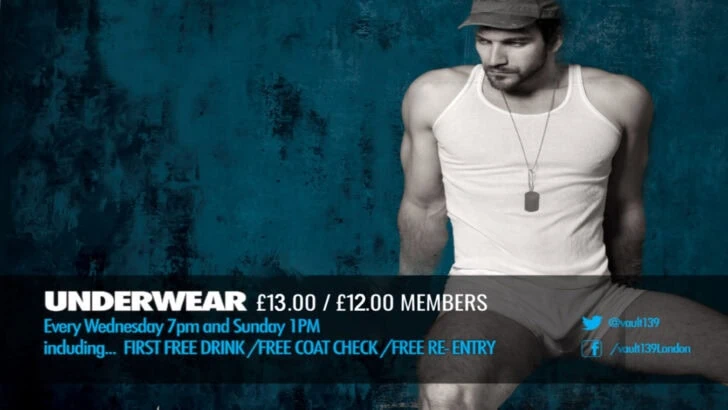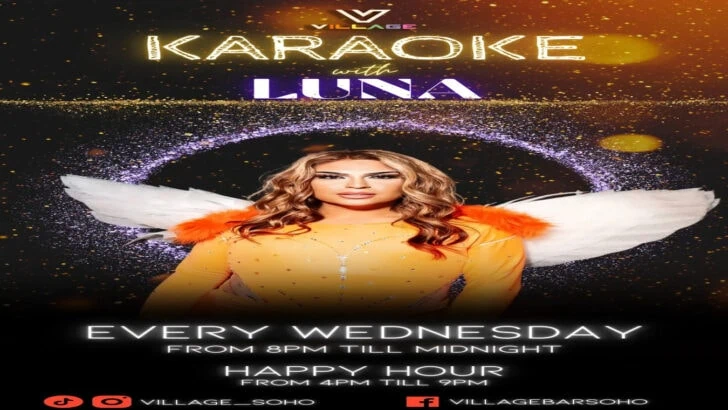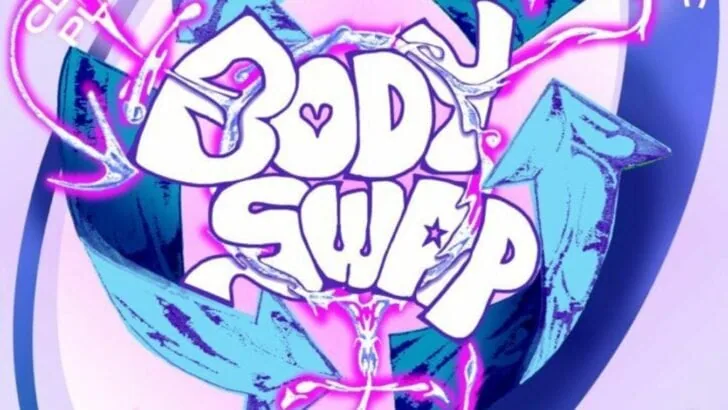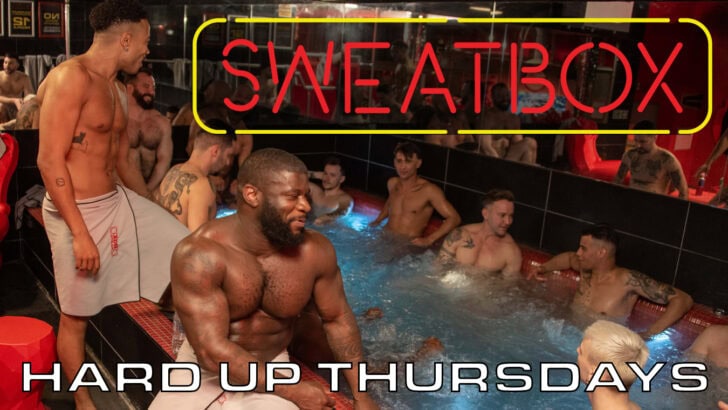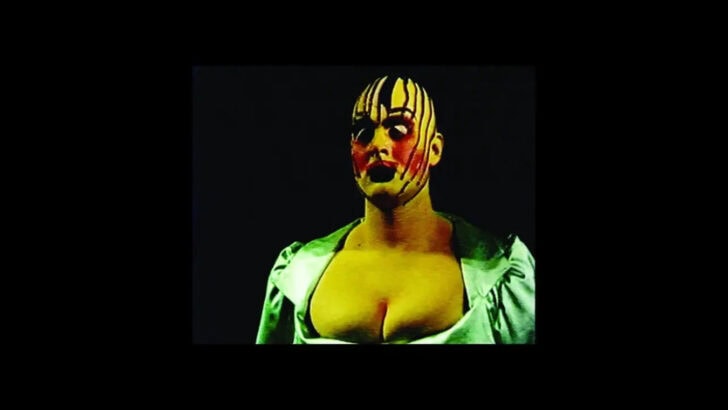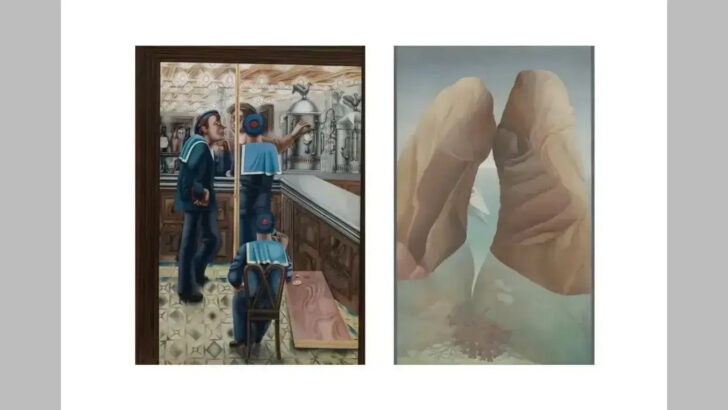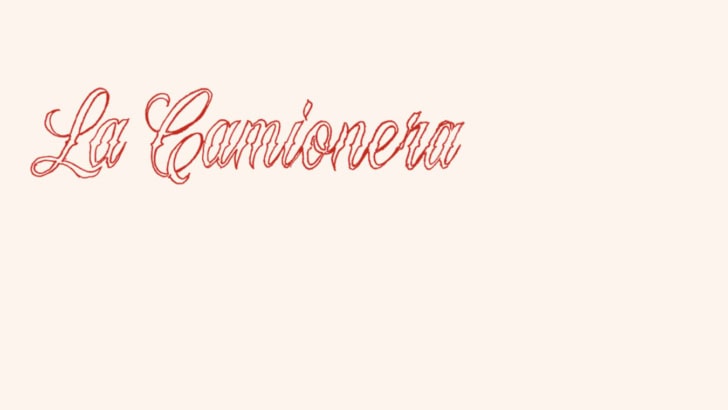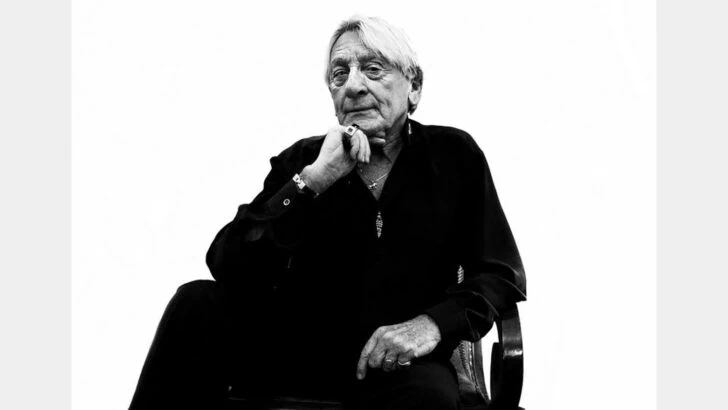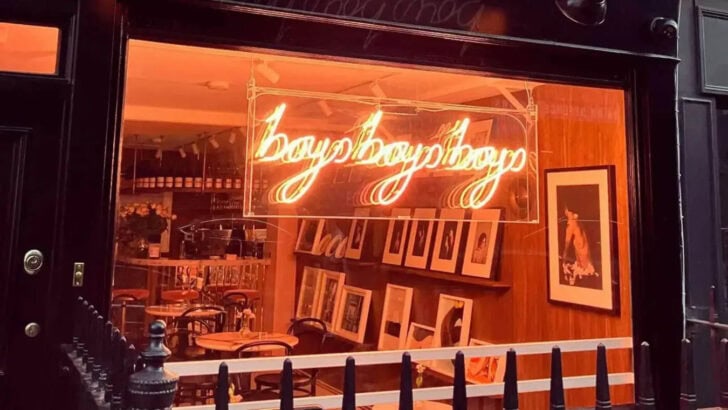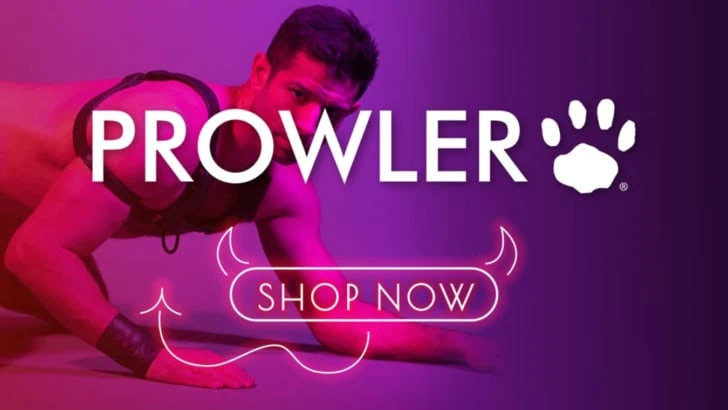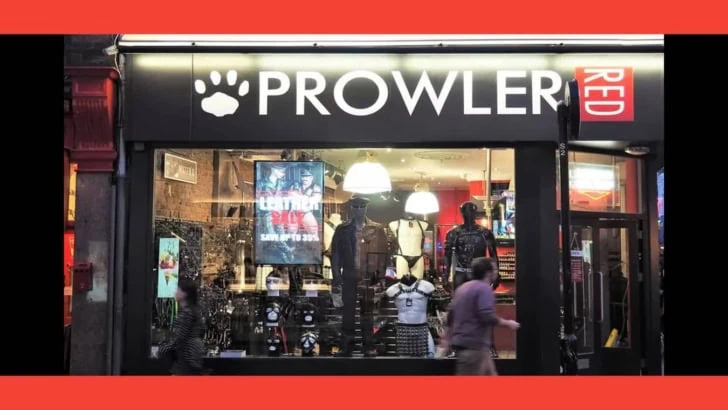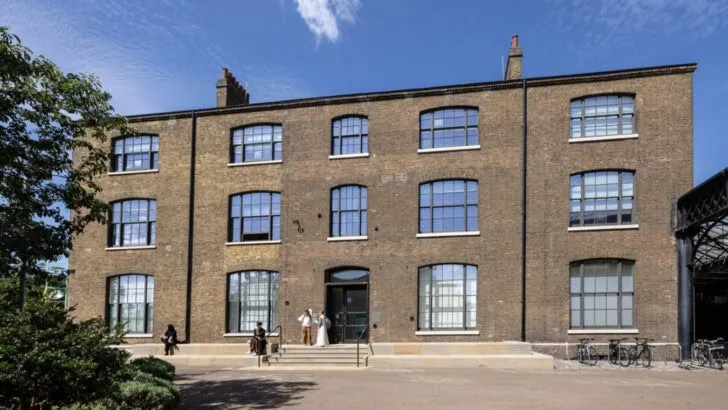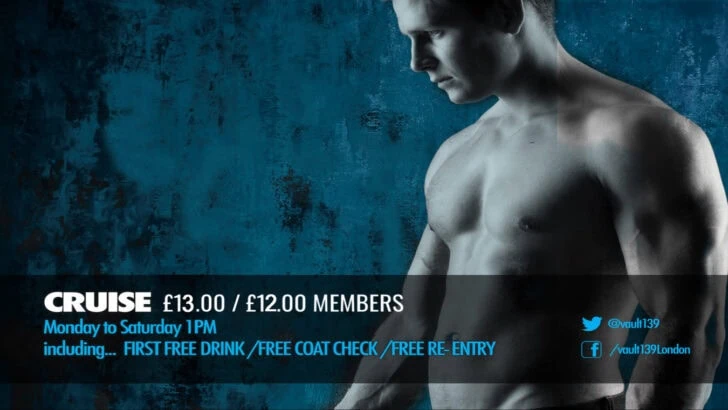Matthew Stradling is a renowned fine artist, and one of Britain’s most accomplished painters of the male nude. He spoke to QX about his work, how he has developed as an artist and how he perceives the modern gay community of London.
By Patrick Cash
Just to start off, tell us a little about yourself.
I’m an artist. I’m from Hertfordshire, a suburban town of London. I’m probably more known for painting, but I’ve branched out into photography recently, and I’ve been doing it for twenty-five years.
How did you get into painting?
I was always good at art at school and I was slightly the weird kid where I wasn’t much good at sports, so I got pushed into art. I was a quiet kid, so I used to content myself playing around drawing and things. It was my safety zone away. That’s how I got into it and I just followed it through. It’s always been my thing, I excelled at it in school and they got me doing special projects. I ended up at university, at St Martin’s, and that’s when I really discovered myself as an artist.
Was there an epiphany point where you realised ‘this is what I want to do’?
Yes, totally. I did an MA at Reading University and I’d spent a long time dealing with my sexuality. I hadn’t quite come out to myself, to the world anyway, and my epiphany was on my Masters degree where I acknowledged my sexuality, and when my work became quite celebratory of that. I felt like I had a mission, I had a point. I also became celebrated at that time, people started noticing me and magazines started noticing me and I sold work to Derek Jarman.
Really? Fantastic!
Yeah, he was the first person to buy any of my art actually.
How did Jarman come across your work?
On my MA, the magazine Square Peg, a gay arts magazine of the time, invited me around to do a feature on me. I don’t know how they found out about me, but the guy who run it was Derek Jarman’s boyfriend at the time and Jarman was there, and I was like ‘oh my god, that’s Derek Jarman!’ You know, I’d never met anyone big, let alone one of my heroes. Because actually my studio in St Martin’s was directly looking over his flat, so I could peek into his flat. I went round and he looked through all my work, and he picked one painting of a little red devil and he said ‘how much is this?’ I’d never sold a painting in my life so I said ‘oh, uh, um… £100?’ He said ‘I’ll give you £200.’ He just gave me the money there and that was the first painting I ever sold.
To Derek Jarman…
Yeah, it was such an amazing support to a kid just coming out of art school and I saw him around at various things towards the end of his life.
Darren 3
And you’re celebrated for the male nude, was your work based around the male nude at this point?
Yes, that’s when I started painting male nudes basically, and you know I had shuffled around my sexuality: my work had always been quite camp before that but I’d avoided the male nude and celebrating the male nude. So when I was on my Masters, it was just suddenly like ‘wow!’ And I recognised that throughout the history of art the male nude has predominated, and a lot of those artists were actually gay, so I kind of reclaimed the homosexuality of the history of art. I was saying ‘look, we’re here, and we’ve always been here’.
What was your artwork like before that at St Martin’s? Was the message subliminal?
It was subliminal, and it was quite camp. There were a lot of flowers, it was quite decadent and theatrical. For my degree show I had dead flowers everywhere and I had made paintings from rotting fruits. I’d painted the space blue and it was like walking into a theatrical space. It wasn’t actually dealing with the nude or sensuality or desire.
The Mirror
If you would send readers who aren’t familiar with fine art at all to one piece of work that would give an idea of your ethos, which one would it be?
That’s really hard because my work has so changed over the years. I’m kind of more known for my early, very decadent male nudes, so I guess people would know them. There was one from a cover of a book called ‘The Sexual Perspective’ by Emmanuel Cooper, and the painting is called ‘The Mirror’, so I guess that’s one and it’s a very sort of Michelangelo-esque male nude looking over his shoulders to a mirror and resting on gold skulls. Probably that one. Just one?
Just one! I know that’s a very hard question and it’s also a kind of ‘burning house’ rhetoric, but it just gives a quick idea of approximation to readers. It also says on your website that you describe yourself as a gay painter, how do you feel personally that this is different from being a painter?
I think I describe myself as an artist who is gay, don’t I?
Maybe it’s just the tagline that comes up: ‘Matthew Stradling is a gay fine artist and painter’…
Okay, well I am gay and an artist, so they describe me, so that’s fine. And my sexuality informs my art so that’s fine. I don’t think I’m a gay painter, there’s this sort of ethos around gay painters which is very kind of old school soft-porn bad art thing: gay art. I mean I look at that and that is there, but I think of myself as an artist who is gay.
And how does your sexuality inform your art?
Well, I believe that art should be completely honest and come from your heart and the truth of your life and what you’ve experienced and therefore my experience of the world is from a gay man’s point of view. Therefore I experience things maybe slightly different to heterosexual people and I, as a gay man, am slightly outside of the norm, therefore I am able to critique from an outsider point of view. And relate to other people who are also outsiders. So I’d say it’s a very important point, and in terms of relationships, gay men and gay people have suffered from a repressed sexuality for millennia and of course that informs my attitude towards sexuality and desire.
Do you think your choosing of the male nude as your subject earlier on has an element of subversion to it?
Oh totally, yeah. It’s very political.
All Fours
It almost seems related to what Jonathan spoke about [at a reading of ‘The Penetrated Male’] of the male body being penetrated by the gaze.
Absolutely. Throughout the history of art so often the woman has been the passive subject, the thing that you adore, that you look to, and I guess in some ways I wanted to regender that tradition and put the male in that position and yes, subvert that whole idea of the male as the heroic and a doer. In those early days I did do a lot of images of women as heroic and with a strong sexuality… So yes, it is a subversion of those stereotypes. As Jonathan spoke about patriarchal society, and how it’s male dominated and male orientated, heterosexual male orientated, yes, I wanted to subvert all of that.
And bring out vulnerability?
Absolutely, yes. And the concentration on the male as heroic and impenetrable, totally, so many of my images are of wounded men, or passive men and I’ve done a series of boxers recently with bloodied faces, so it’s like defeated men which is in our tradition of imagery, in the images of Jesus and saints and things like that. I reference those religious images a lot. But by giving it a different twist: it’s actually about vulnerability and hurt.
Boxer
And you said your work has changed massively since you started off, how has it change and is it because you think that art always has to be reflective of the time period in which it’s created? Because society has changed?
Yes, and also I’ve changed as a human being, and if I’m to be honest with my art I have to describe what’s going on inside me and when I was doing those orgiastic, hedonistic paintings of men, it was when I was coming out and celebrating the scene and sexuality. But I’ve grown as a person and now I think I’m more interested in the intimate and the human, and darker things. Dark shit! But yeah, of course, it is relevant to what’s happening in society as well. I don’t do the scene, I don’t do that hedonistic lifestyle anymore, and I can’t continue to celebrate the idealistic forms of men, so I am having a different take on things from a mature person’s point of view.
At what point did it change, did you fall out of ‘lust’ with the scene?
I suppose when it no longer continued to be magical and exciting and actually you realise there is quite a lot of damage there, and it’s great when you first go out, but you can’t go on doing that forever. I guess I realised there was something beyond the beauty of glamorous bodies and hedonism and I decided to seek something more meaningful.
Silver
Do you think the gay scene is possibly too embroiled in the cult of youth?
I don’t know if it’s youth but it’s very homogenised towards… It’s not very embracing of all kinds of people, I find. There are only a couple of clubs that cater to outsiders of the homogenised gay scene. I think it’s okay that it’s youth, because young people are mostly people who want to go out and get their rocks off and have fun and be hedonistic, but that wears thin after a while and it’s kind of the weird thing of my generation, because we were the early generation of clubbers, and a lot of my generation have continued to club and I’m looking at them going ‘well, is that all your life is?’ and yeah, everyone is trying to look younger, and yeah, it’s a difficult one. But I would like to see more diverse clubs, and not even just dance clubs, just something else. It’s kind of sad that so many bars are closing down and in local bars everything is very centred on the West End or Vauxhall. Yes, it would be nice if there was more of a community thing about being gay and that you don’t have to go out and spend thousands of pounds on drugs!
So what is your opinion of gay society or gay community as you perceive it in London? Is there a gay community?
I’m not sure I do see much of a community, no. It’s not very supportive and it’s very money-orientated, I’m just thinking back that when I was younger there were lots of little local community groups and if you were thinking of coming out you could just meet people, and you didn’t have to go to a gym and get your top off. Yeah, it would be nice to see a more human side to a gay community. It’s very hard and very harsh, I think. And the people that I’ve spoken to in the community side of it, they’re just continuously being closed down and money being taken away, and I don’t know if that’s saying there’s not a need for it, because it’s so much easier for younger gay people to come out and get out there. I guess it’s very difficult for people from ethnic minorities to come out, it’d be nice if there was more reaching out to them. It’s very easy if you’re white and pretty and making money in London.
Shrapnel
How does your art, as a reflection of your sexuality, tie into wider society?
Well I am here as evidence of a gay man who expresses himself through his art so I am very aware that I am making a point to a wider audience and to say: ‘I’m here, I’m queer and I’m painting.’ I’m very aware of that, and I hope to move people and challenge people’s ideas, from the straight community, or whatever. with my work. I’m very aware of that.
Do you think that a gay person would react differently from a straight person to your work?
[Pause] Probably, yes, because hopefully they will identify with me to some extent, which is what I’m trying to say, but I suppose of late a lot of my work has been quite confrontational, confronting a straight world and what they think of gays. I quite enjoy that confrontation and being repellent. Because that is the reality of how we are, we have to face some things about ourselves that aren’t all that pretty, but I just think I’m telling the truth.
Volte Face
How have people in the art world reacted to that?
I have encountered a lot of homophobia, people just won’t touch my work because they just don’t think it will sell and the art world is all about selling so I’ve kind of given up on that one, and it’s now become my mission to communicate rather than sell. Yes, there are lots of rich men who want to buy pretty boys in gold and pearls, but it doesn’t really say anything to me anymore and I don’t want to do that anymore. I don’t want to do things for money –
Wound III
And how does the art world react to the confrontation and ‘being here, queer and not taking any hostages’?
[Laughs] I’ve become so cynical of the art world that I’ve moved away from it, and I will only deal with people that actually get me so ‘if they want me, come and get me’ is my attitude in the art world. They don’t really get me.
So do you sell to private collectors?
Mostly, yes.
So if you had an exhibition, I mean it obviously changes with what you would be exhibiting but you know Francis Bacon said ‘art should leave people feeling life more strongly’, what would you ideally want someone leaving your exhibition to feel?
Principally moved. I really want to move people, I want that connection with people. Ultimately we’re all human, whatever sexuality, gender or ethnicity you are, you all share humility and also they challenge people’s ignorance, that they would have gone away thinking and questioning themselves but it would be a very personal experience for them.
The Tears of Eros
Fantastic. And where does your photography stem from in terms of your art?
Basically I found myself at a very stuck point with my painting a couple of years ago and what happened was, it’s a long story but I was supposed to be in a show in Canada, and my paintings that I sent for the show got stuck – you know when there was the ash cloud? – yeah, my paintings got stuck in France, I didn’t know where they were and I had to be at this exhibition in Canada and so I thought ‘oh fuck, what am I going to do?’ So I use photography for my paintings and I thought maybe I’ll stick some photos together and send them digitally and they can print them out there and put them in the show. At least I’d be represented. And then I just found myself really getting into this photography thing and I kind of expressed a more experimental side to me, it was faster and it meant I could throw things together without having to be too careful about them and I didn’t have to spend hours painting them. It just grew and grew and it kind of took over for a while, it was just a new outlet for my creativity and there are lots of similarity between my paintings and my photography, and because I have a painterly eye I manipulate the images in such a way so that they do look like paintings. And also, there’s something about photography that it’s coming from real life, it’s not been translated through paint, it’s got more of a thrill. There are images of my mother and me and things that are very dear in my life which I think that, when you take photographs of, it’s just really intimate and with an intimacy that when you do it through painting is divorced. A kind of detachment.
That’s interesting. Because some people do say that technology is the divorce of intimacy, but actually when you think about it it is closer.
Yes, there’s much more process in painting which distances you from the subject.
It’s more systemic.
Yes, exactly.
Vanitas #3
And finally, where can we see your work soon?
My photography is going to be in a show in Manchester which opens on the 23rd May, called ‘Sin in My Heart’, being put on by the Two Little Birds. Then I’m having a one-man show in ‘La Petite Mort’ gallery, in Canada, in October of new small paintings.
Fantastic. Thank you.
